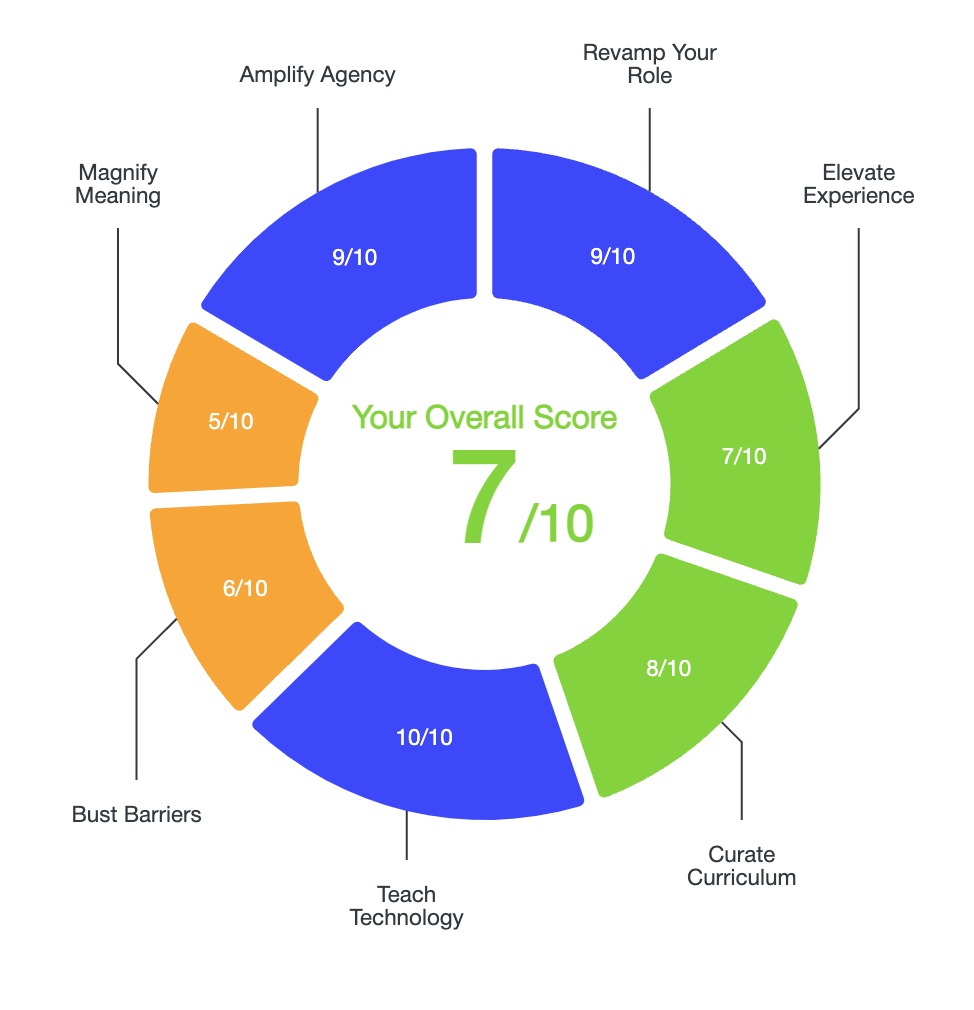Whether teaching remotely or in the classroom, making video projects with Adobe Express (formerly Adobe Spark Post) is a great way to provide students with an engaging, rigorous project that encourages creativity, as well as cultivates relevant 21st century skills!
1. Launch the Lesson
Prior to assigning this project, I recommend you make a Screencastify tutorial in order to provide students with a bigger picture overview of the project. In your tutorial be sure to:
- Explain the Learning Targets and Essential Question
- Walk them briefly through each section of the graphic organizer
- Model clicking on a hyperlink
- Explain how to ask questions and what to do if they get stuck
- Demonstrate how to you want them to submit their work
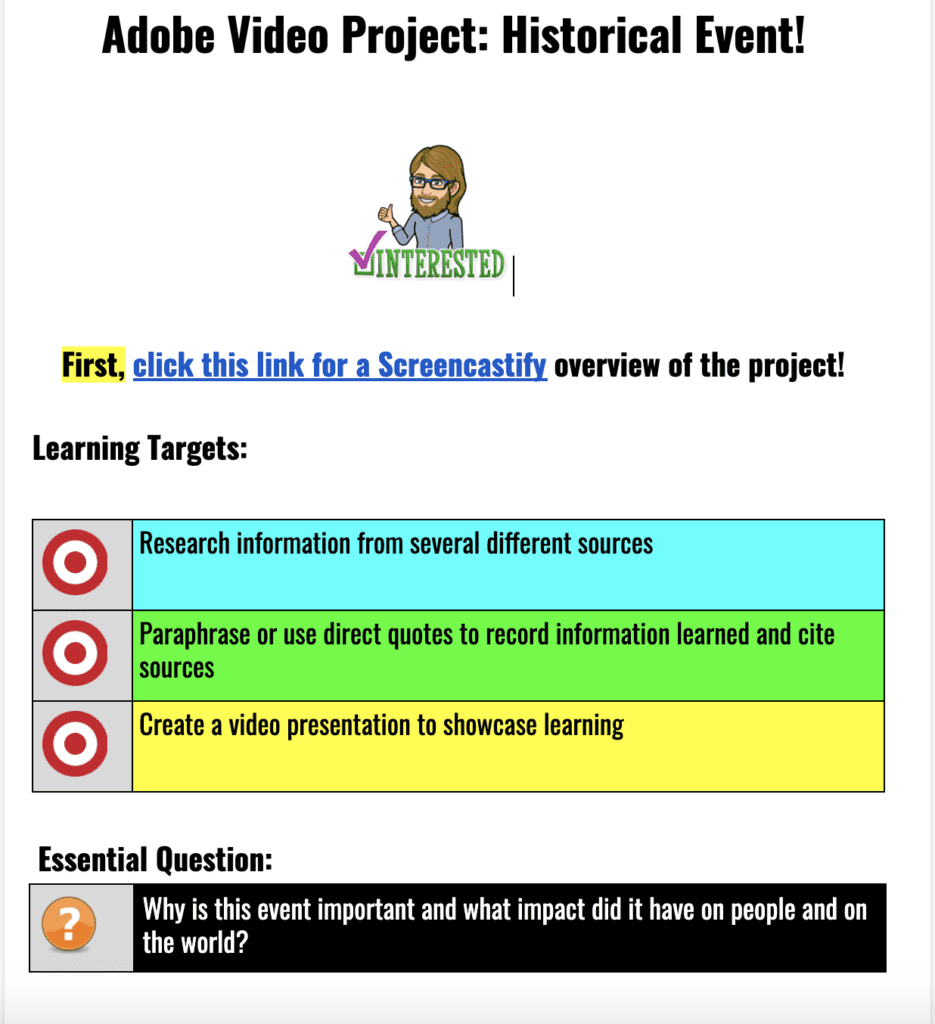
2. Engage Students in the Topic
Although some students might already know what they want to do their report about, it’s important to give them the opportunity to explore prior to starting their projects. Here, I like to encourage students to research a historical event they might not have much prior knowledge about in order to learn something new.
First, students click a hyperlink that takes them to a pre-created Google Search (“important historical events”). Then, after spending some time researching, students record the event they plan to study, why they chose that particular event, what they already know about the event, and what they hope to learn.
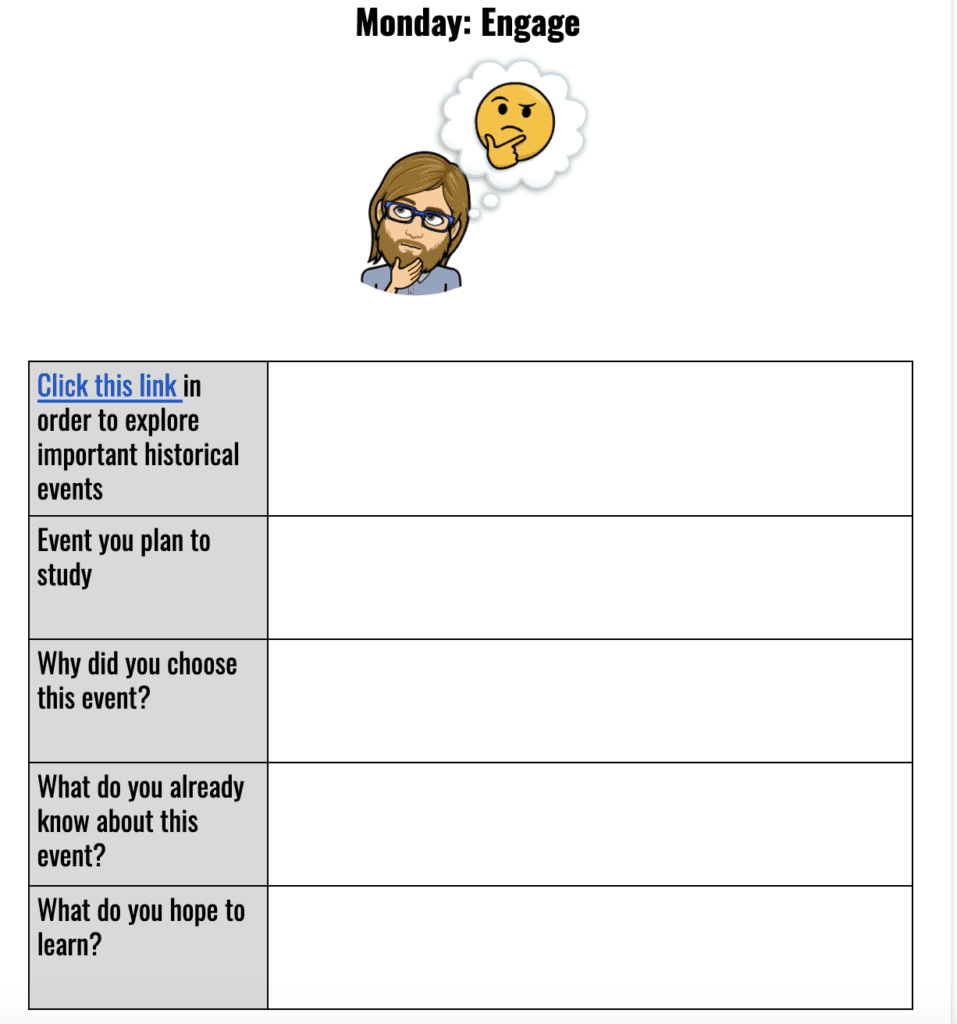
3. Practice or Review an Academic Skill
While students are completing their research, I want them to practice target academic skills. In this case, while students are researching their topics and taking notes, I want them to practice either paraphrasing or using direct quotes, as well as how to correctly cite their sources.
Here, I created hyperlinks to:
- A Flocabulary video about paraphrasing
- An Edpuzzle video about using direct quotes
- My own Screencastify about correctly citing sources
After watching the videos, students record what they’ve learned, and then practice applying each skill.
This would be an ideal place in the lesson to jump in and provide students with feedback in order to ensure they are ready to apply each skill during their research.
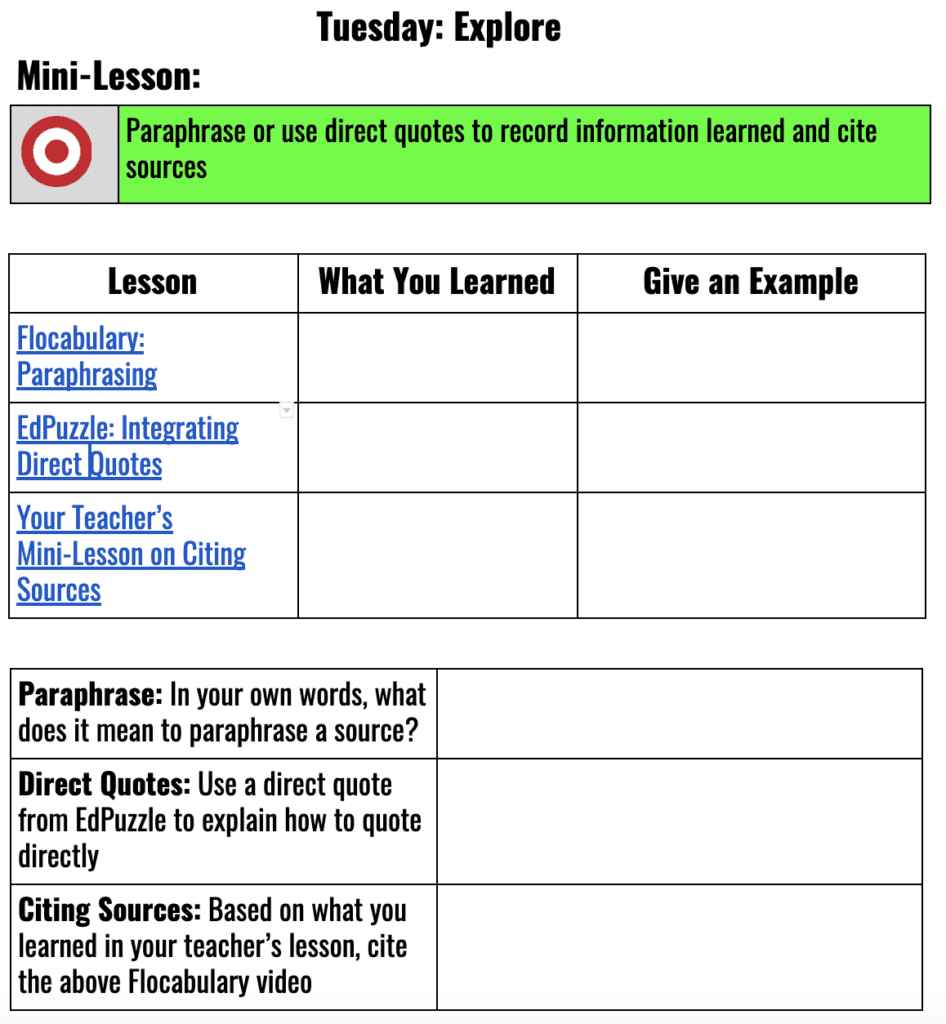
4. Explore the Topic
At this point, students are ready to research their topics.
Here, I provide students with a menu board that includes links to different websites where they can research their topics. Although you can (and should) teach students how to research using open Google searches, students often will not find high quality websites to use for their research unless I direct them to those sites. Here are the sites I included for this assignment:
- Newsela for differentiated articles in numerous topics
- National Geographic for high quality articles and images
- The Crash Course YouTube channel for short, humorous videos about almost any academic topic
- Ted Ed for short, high quality videos
- Google Arts & Culture for a wide array of articles, images, 360 videos, and more
- Encyclopedia Britannica for reliable information on any topic
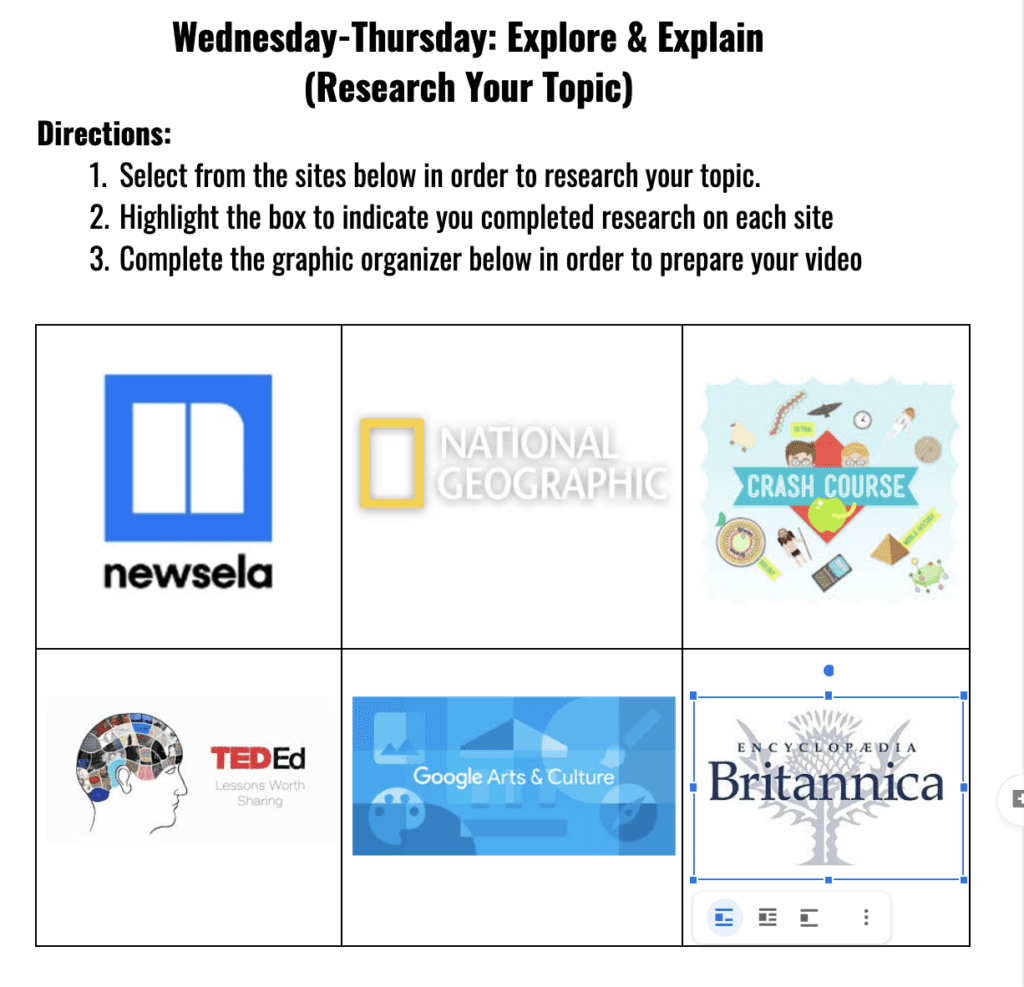
5. Explain the Topic
While students are researching, I also have them search for the answers to target questions that I pre-wrote for them. Here, students applied the paraphrasing and direct quoting skills they practiced earlier in the week, as well as cited the source where they found the information. The information they gather in this segment of the lesson will eventually become the content of their video reports.
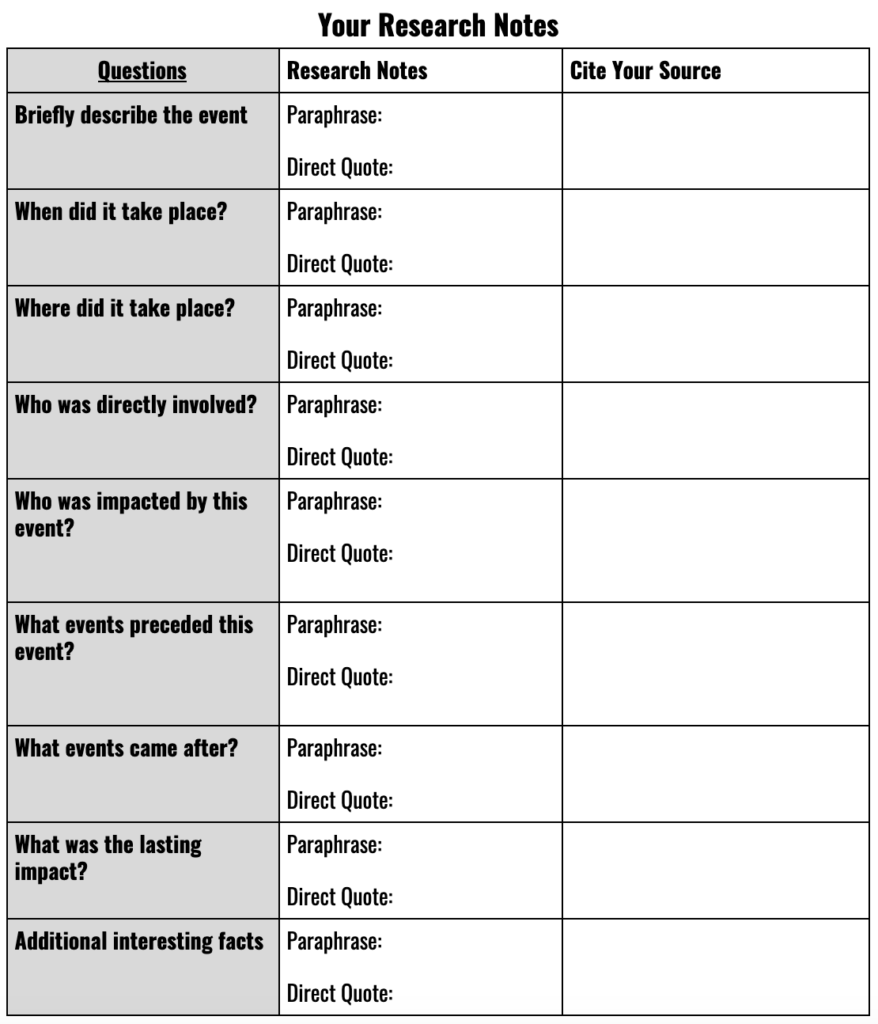
6. Elaborate: Create an Adobe Express Video
I love using Adobe Express with my students because it’s incredibly easy and intuitive to use, and the final products always turn out looking polished and professional.
Adobe Express has a free version that is perfectly fine to use with students. Similar to other free versions, it will leave a watermark on videos, and some templates won’t be available. Schools can also access free Adobe Express accounts for students. Click here in order to find out more information about how to get an edu account.
Watch my tutorial video to learn how to create videos with students using Adobe Express. Claudio Zavala Jr. also has lots of great tutorials on the subject.
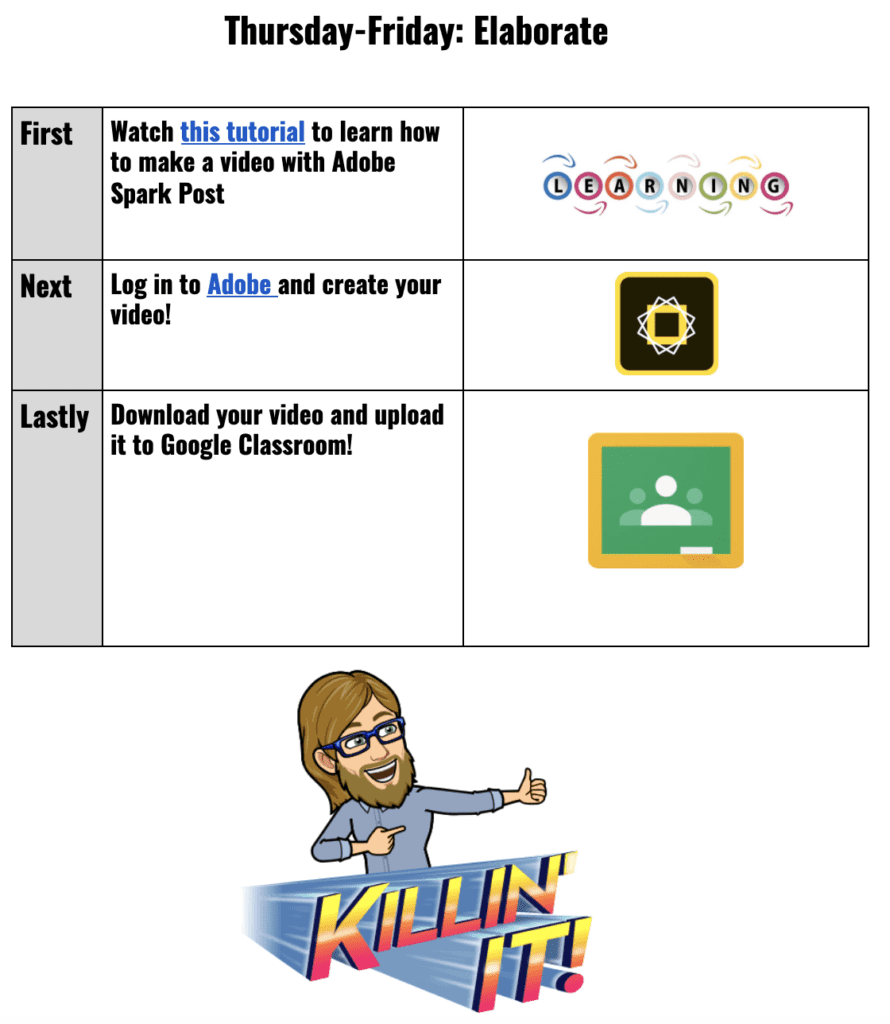
7. Creating Video Reports in Adobe Express
Once in Adobe Express, go up to ‘Create a Project,’ choose ‘Video.’
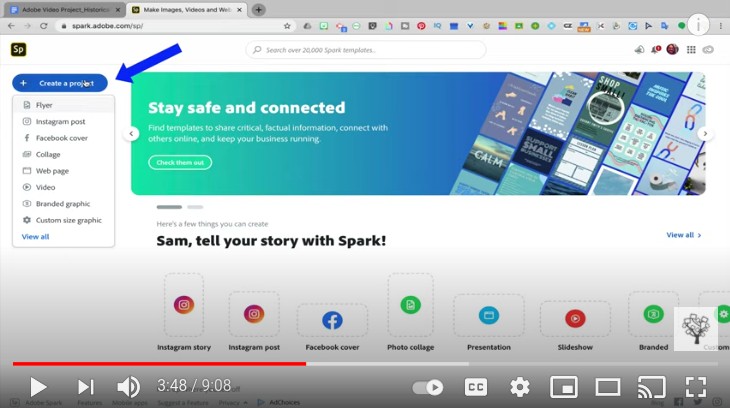
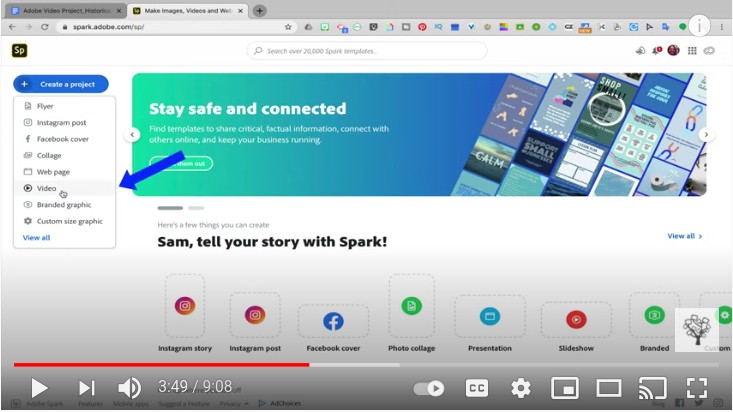
Next, enter a title, which can be edited later.
Then, you have the option to choose a template or you can start from scratch.
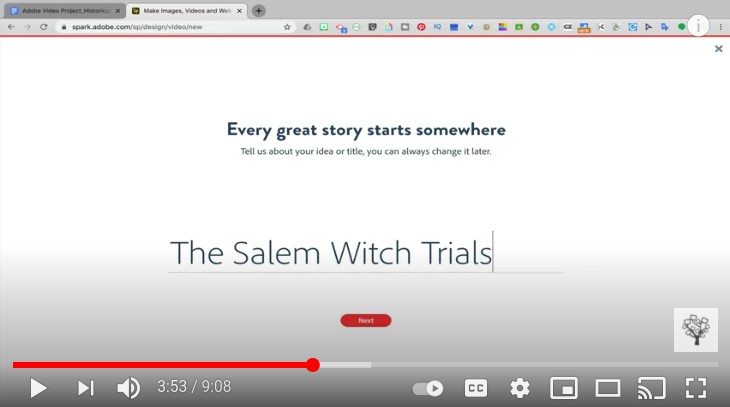
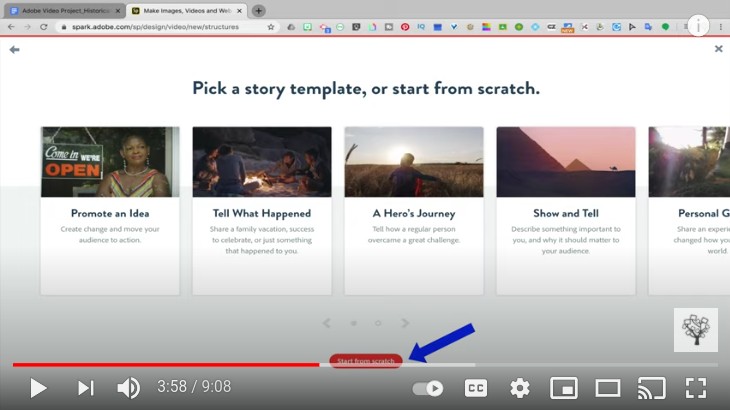
Now you’ll be inside the creation studio. On the right-hand side you’ll see that you can choose different layouts.
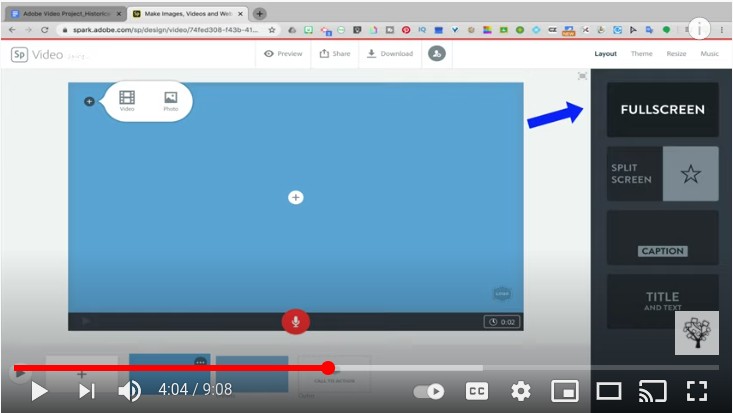
Then, at the top left you’ll see that you can add a video or a photo. If you click on the ‘Add’ button in the middle you’ll see that you can add text or add an icon.
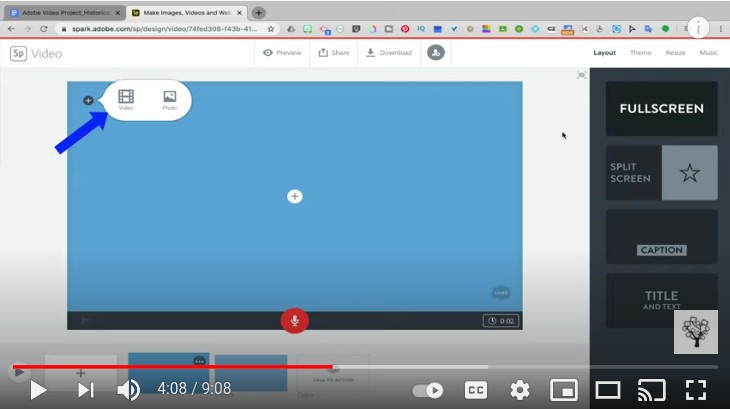
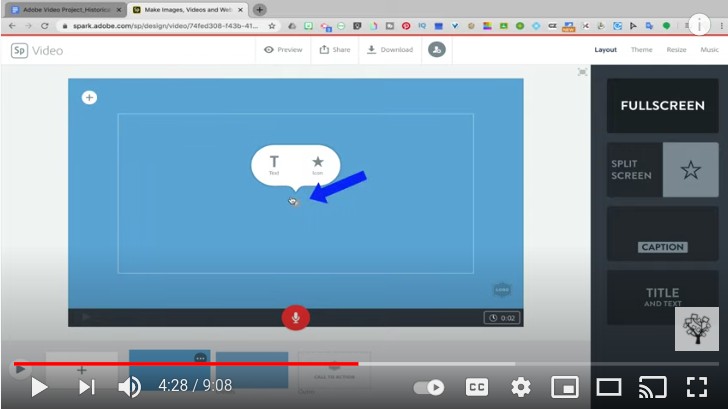
In the middle, you could enter the title of your video, and then adjust the font size as needed.
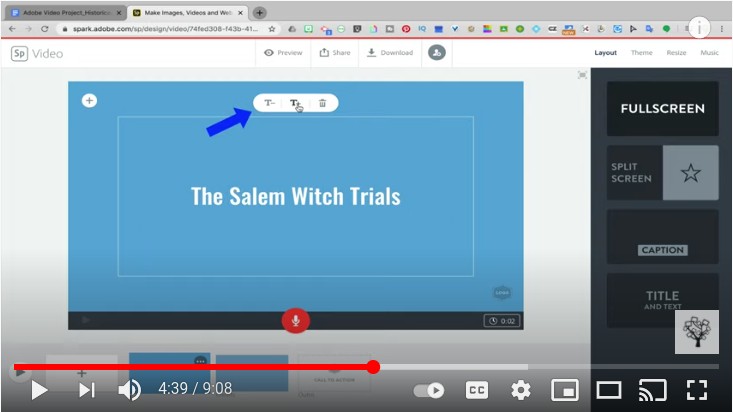

Then, you can click the ‘Add’ button on the top left-hand corner to add an image to the background. There, you’ll have an option to upload photos or you could search for images using Unsplash or Pixabay.
To add the image, just click on it and it will appear in the background.
You’ll also see that you can change the size of the image by clicking on the ‘Edit’ button on the top right hand corner.
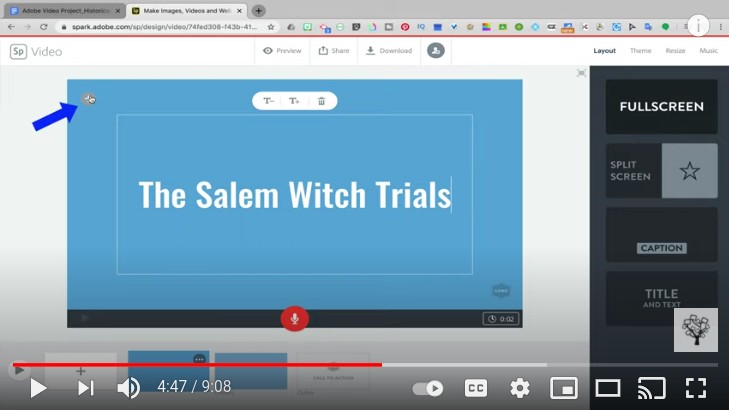
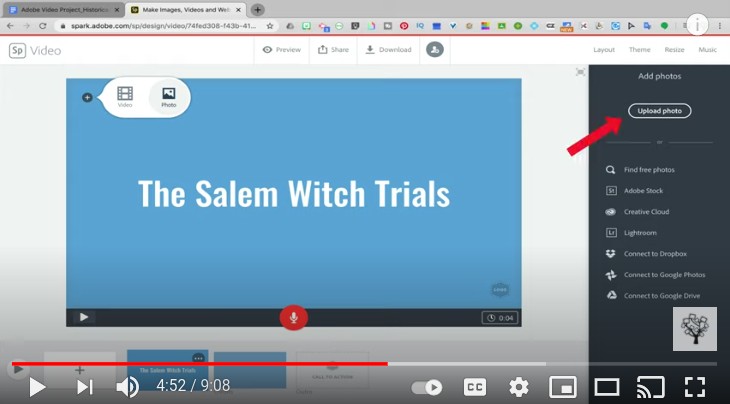
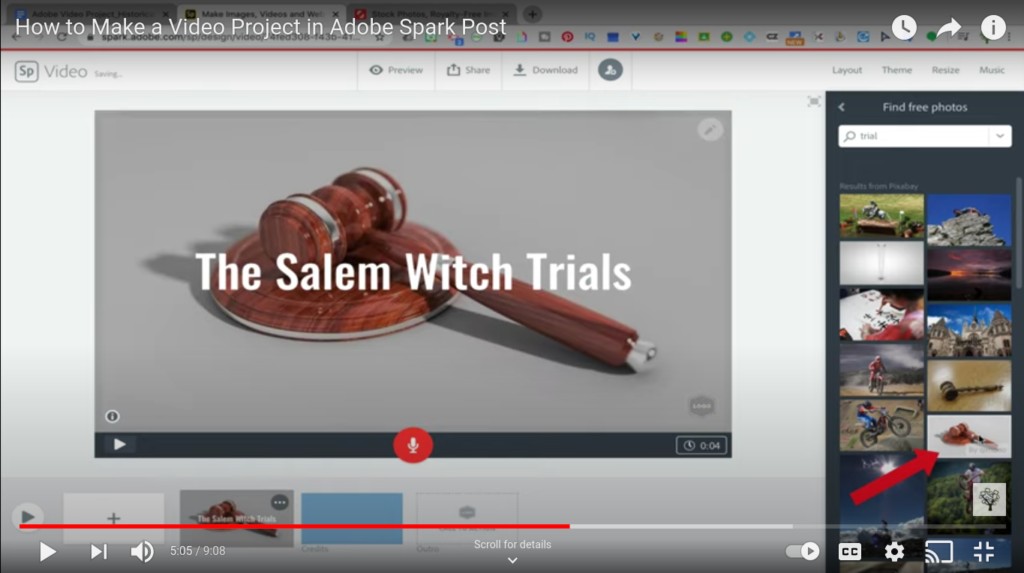
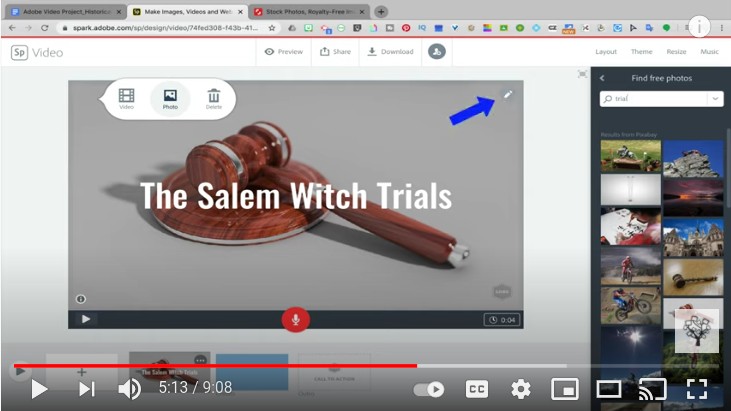
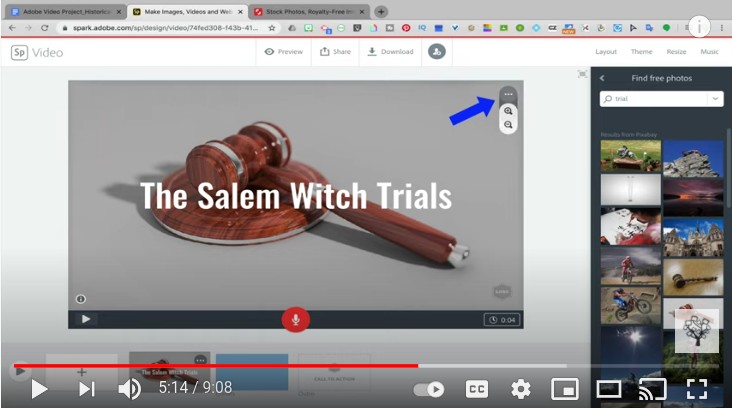
Now that you’ve added some text and images, you can also pick a theme for how text will be animated in the video.
Go up to ‘Theme’ on the top right-hand corner and when you hover over a theme, you’ll be given a preview of what the animation will look like.
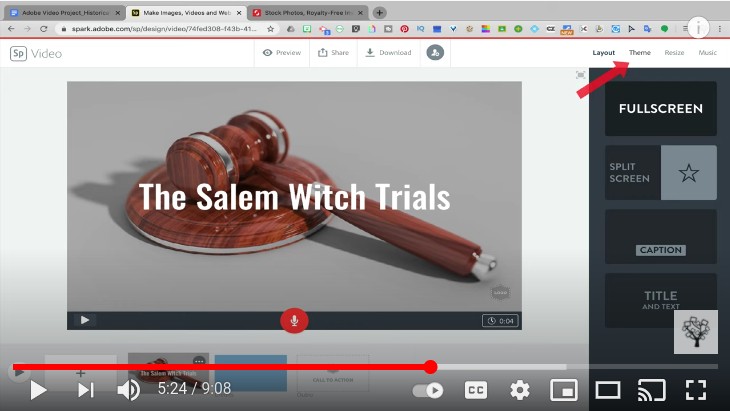
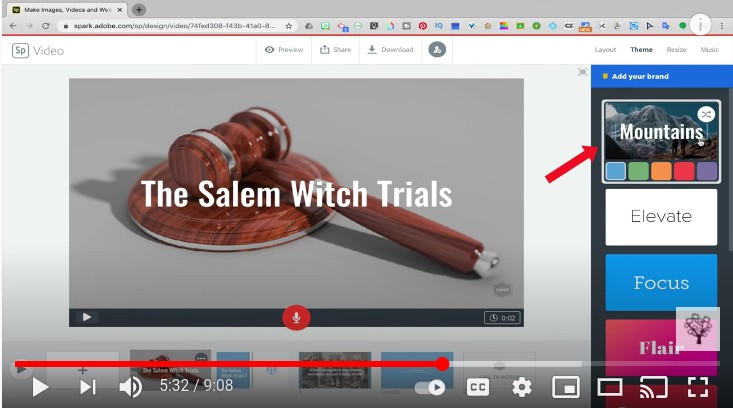
After you’ve added a theme, you can also add music to the video.
Here you’ll see that you’re given many different options for the type of music to include. Simply select a musical track and it will add it to your video.
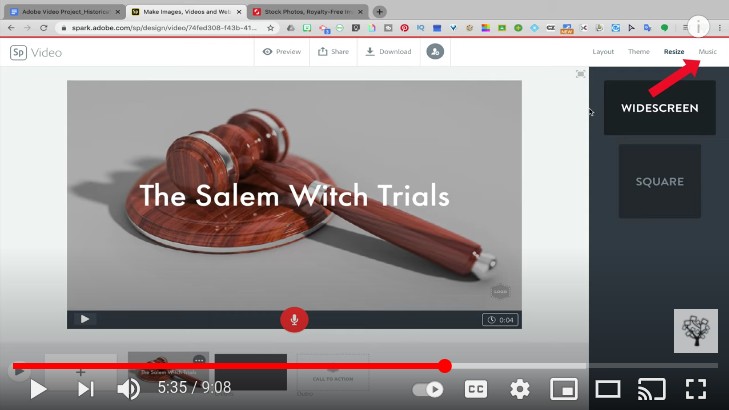
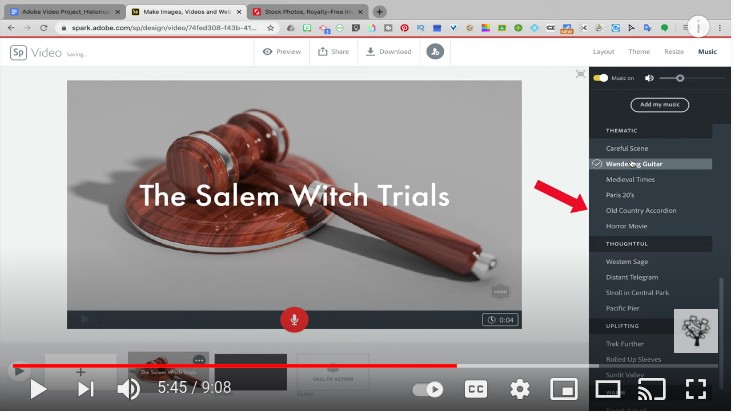
In addition to music, you can also add voiceover to your videos.
To add a voiceover, click on the microphone, hold down, and then begin speaking. If you want to re-record or just remove the voiceover, click on the clock icon on the bottom right-hand side and then click on the trash can to remove it.
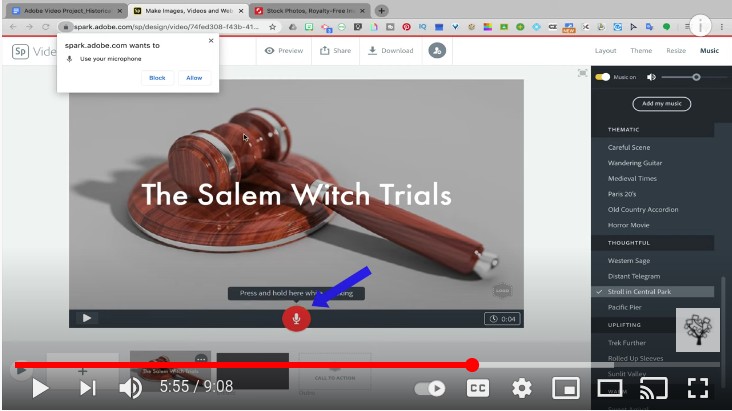
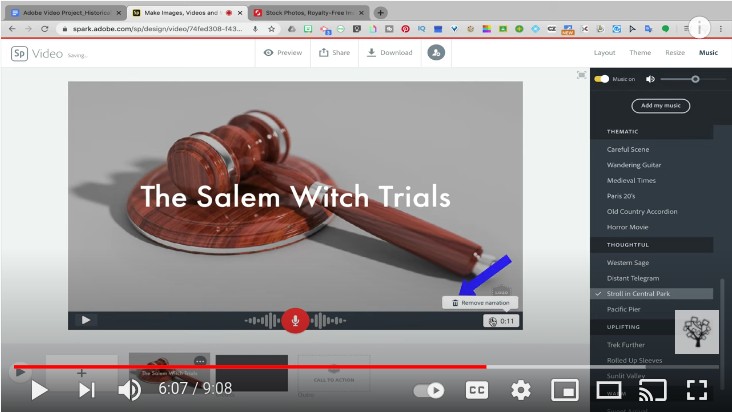
Then to adjust the duration that this particular slide will play, click on the clock again and make it either shorter or longer. Slides should be long enough for somebody to be able to read them, but should move at a relatively quick pace.
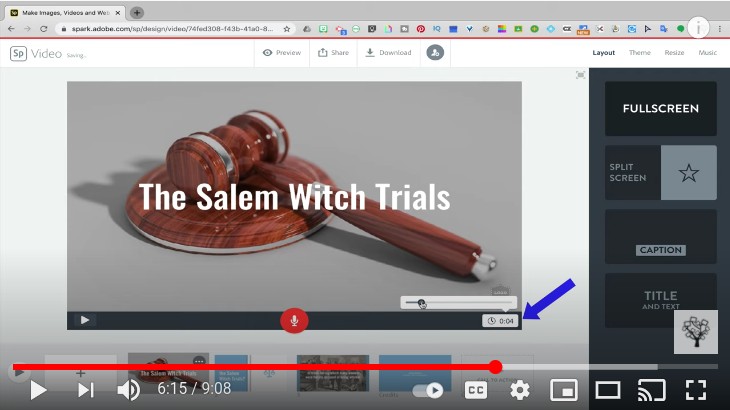
To add new slides, click on the ‘Add New Slide‘ button on the bottom left-hand side.
In addition to the fullscreen layout, you can also choose from additional layouts, such as the split screen. Instead of an image, you could add an icon to one side of the slide.
Then on the other side, you could add additional text. Again, you can make that smaller or bigger, as well as rearrange where the text is on the page.
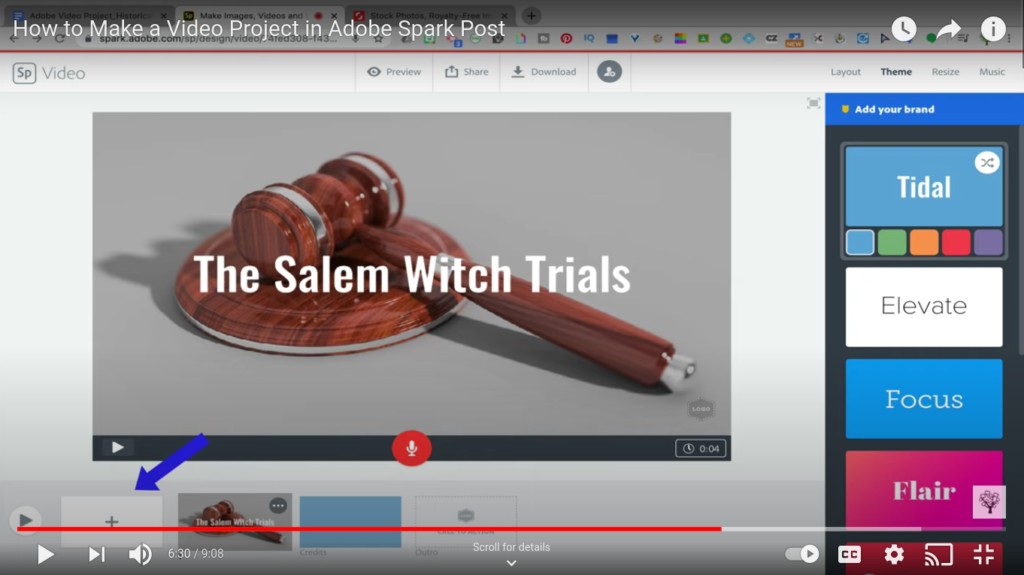
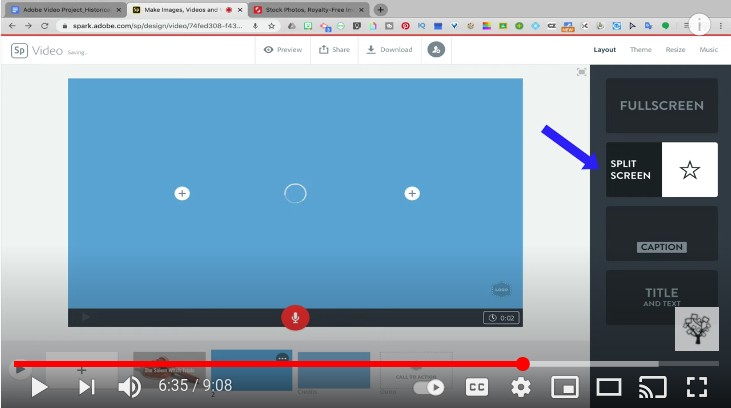
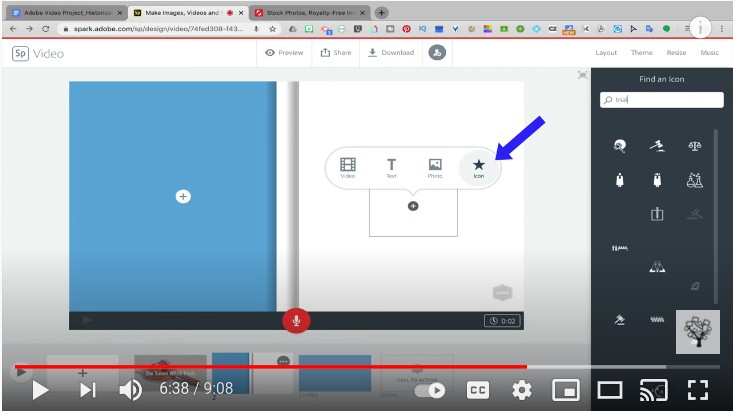
Once you have all your slides created, click ‘Preview’ to see what the completed version looks like.
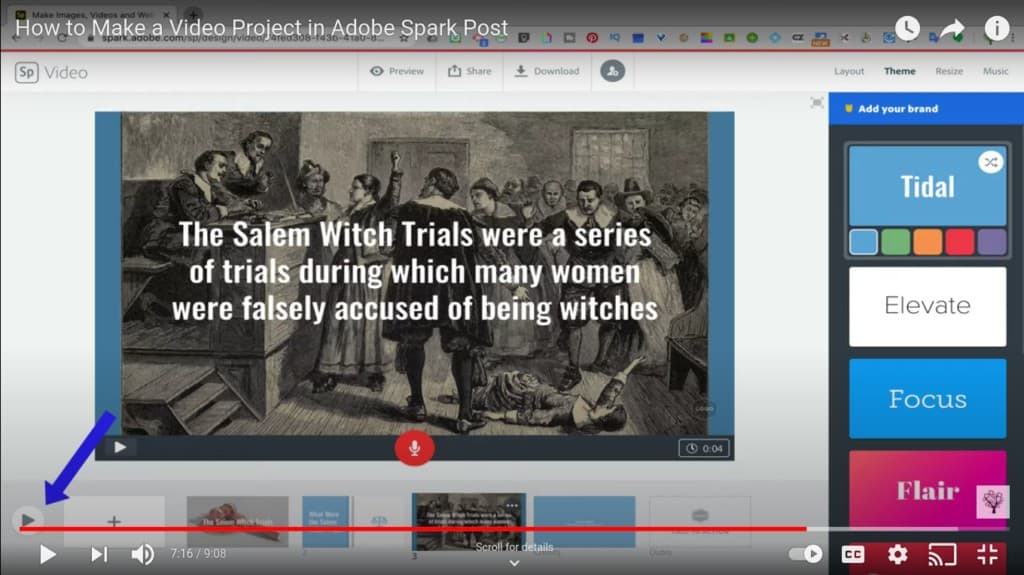
Lastly, students can choose to either download the videos or share the published video link.
If submitting their work via a Learning Management System like Google Classroom, it might be best to have them download the video so they can re-upload it.
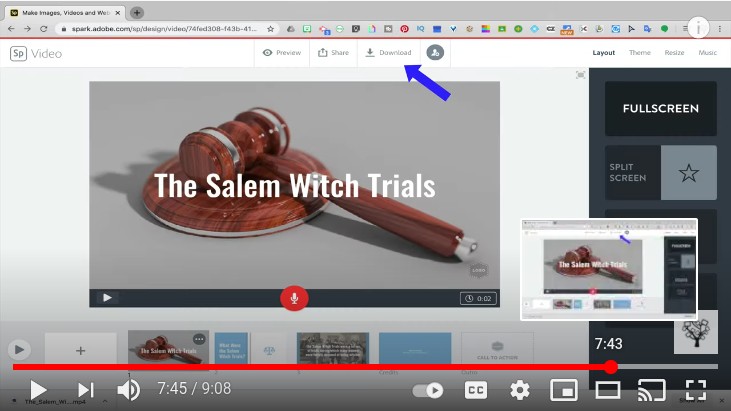
If, however, you’re going to have students share their videos back to a Padlet board, they would just need to copy and paste the published link directly on the board.
In this case, after students post their videos, they would all be able to watch and leave comments on each other’s videos.
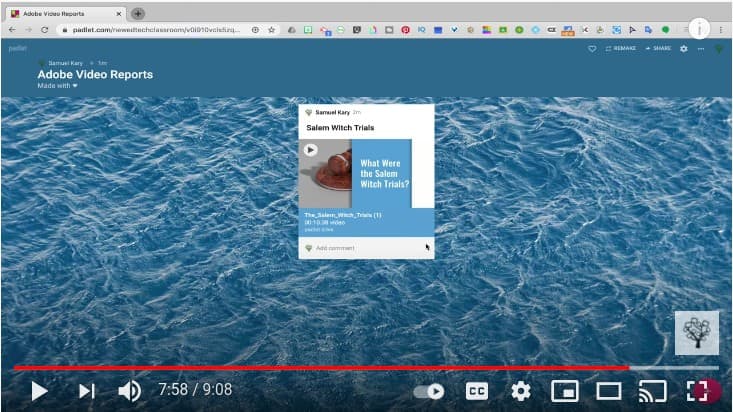
8. Share & Reflect
I believe it’s important for students to be able to showcase their work with others, particularly when learning remotely.
Padlet is a great resource for having students share the work they’ve created with each other because students can upload all types of media files, and can also comment on each other’s work.
Lastly, I have students reflect on their work in order to bring them back to the bigger picture, as well as build metacognition skills.
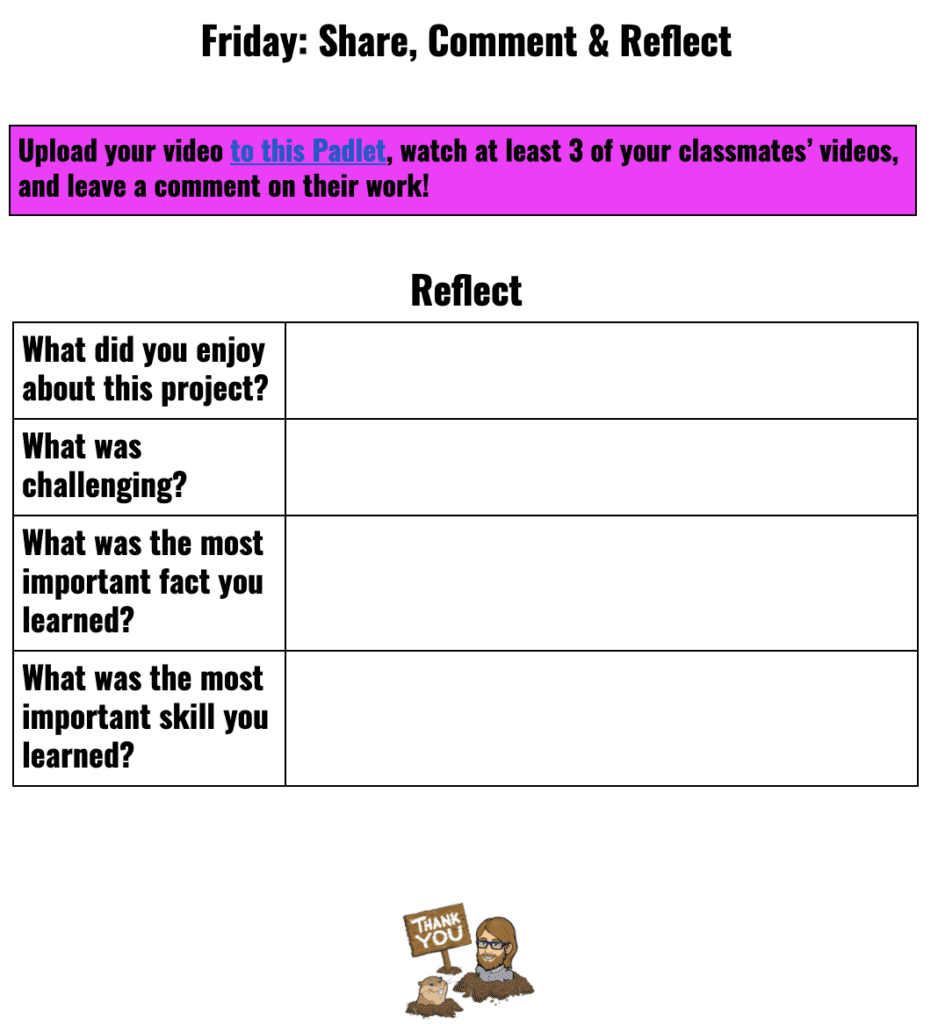
Conclusion & Resources
Creating a video report with Adobe Express is a great way to encourage student creativity, as well as provide students with choice while maintaining a high level of academic rigor.
If you’re interested in learning more about how to create projects in Adobe, check out this other post about creating an Adobe webpage project with your students!
To access the Google Docs Lesson Plan: Adobe Video Project, click here.
For additional strategies for increasing autonomy, creativity, engagement, and academic rigor with technology, click here:
How to Use Education Technology: The Ultimate Guide
And to read more about why I believe technology must be a central part of public education today, click here:
Why Education Technology?: The Ultimate Guide
Interested in the software I use to create my videos? Check out the links below! Many of these products offer a free trial to start and just clicking on the link helps to support The New EdTech Classroom!
Screenflow is a dynamic, intuitive video editing software that I use to create all of my YouTube videos. They’re currently offering a free trial! Get more details here.
I use Adobe Express to design all of my YouTube thumbnails, as well as for my social media graphics. More information here.
If you’re interested in creating a website, these are a couple of programs I personally use and highly recommend: Bluehost is a web host that offers a professional platform for your website. You can check them out here.
Elementor is a powerful tool that helps with clean visual design for your website as well as marketing to further your website’s influence. More details here.

